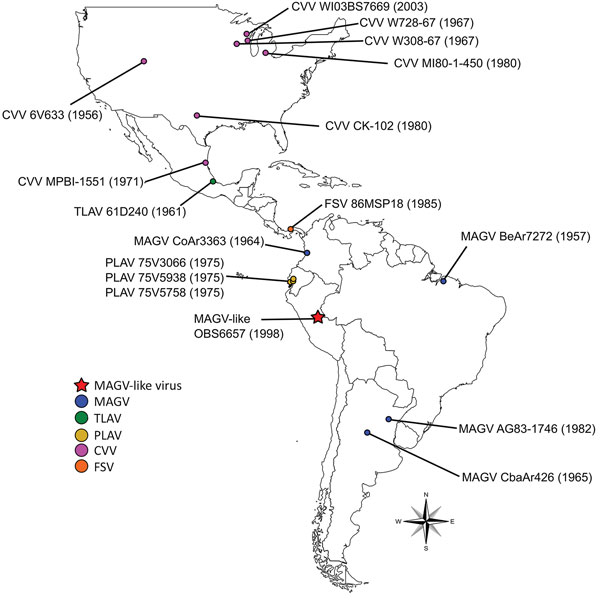Volume 23, Number 8—August 2017
Research
Maguari Virus Associated with Human Disease
Figure 1

Figure 1. Geographic locations from which virus strains used in study of human infection with MAGV were isolated. Red star indicates the location of the MAGV-like isolate OBS6657; circles indicate source locations for other isolates used in this study. CVV, Cache Valley virus; FSV, Fort Sherman virus; MAGV, Maguari virus; PLAV, Playas virus; TLAV, Tlacotalpan virus.
1Current affiliation: University of Texas, El Paso, Texas, USA.
Page created: July 17, 2017
Page updated: July 17, 2017
Page reviewed: July 17, 2017
The conclusions, findings, and opinions expressed by authors contributing to this journal do not necessarily reflect the official position of the U.S. Department of Health and Human Services, the Public Health Service, the Centers for Disease Control and Prevention, or the authors' affiliated institutions. Use of trade names is for identification only and does not imply endorsement by any of the groups named above.